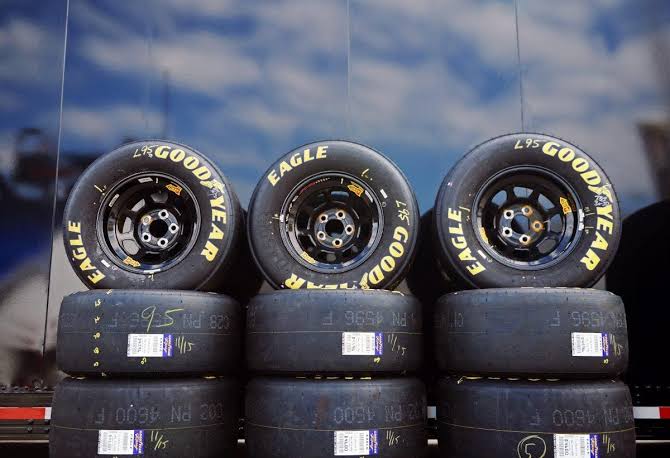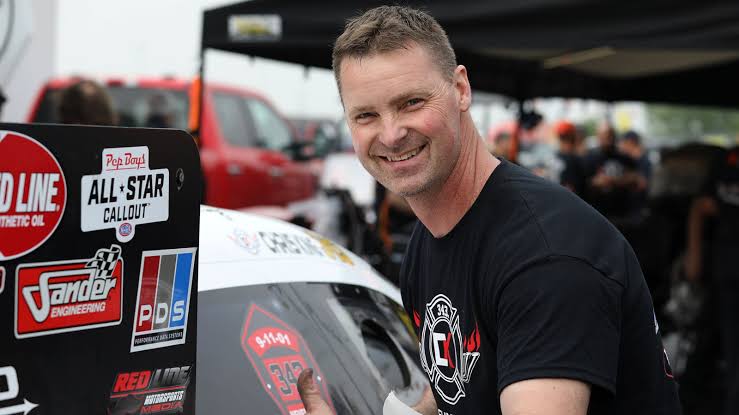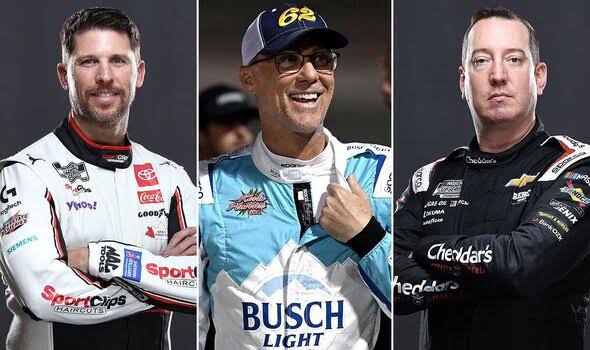On Saturday night, Bristol saw 46 fewer lead changes than the season-opening Spring Race, but, unexpectedly, it became the fastest Cup Series race ever held at the track since it opened in 1961. With an average speed of 101.277 MPH, this year’s Night Race was 20 MPH faster than the 2024 Food City 500. Despite this, many fans in the grandstands felt the 2024 Bass Pro Shops Night Race didn’t quite meet expectations. Was it the lack of passing, Kyle Larson’s dominance, or the minimal lap-time fall-off on Goodyear’s tires that didn’t live up to what fans anticipated, especially after the dramatic events of the March race? The outspoken spotters from Door Bumper Clear have offered some sharp insights for those blaming Goodyear in this debate.
The Bristol Spring Race made history as one of NASCAR’s more puzzling events in recent memory. The switch from PJ1 Trackbite to a resin compound before the March race led to unusual tire wear. Tire codes D-5170 (right) and D-5206 (left) began to degrade after 30-40 laps on the warmer concrete, and after 500 laps, many realized the race might have been a once-in-a-lifetime event. Denny Hamlin and his #11 team managed the situation best, securing a second consecutive victory at Bristol. However, when Goodyear brought the same tire codes to the Night Race, Hamlin finished fourth. In practice, drivers noticed a significant difference in tire wear from March. Kyle Larson, the race winner, told Bob Pockrass that by “Lap 10 in practice,” he had already picked up on the changed conditions, which may have helped him lead 92% of the race laps on Saturday. Hamlin, finishing over ten seconds behind Larson, voiced his frustration, saying, “The tires either don’t last 40 laps or they last 200. We need consistency with the tires. Other than that, all the cars and drivers are equal, which is why passing is so tough.” Many others echoed his sentiments, blaming NASCAR, SMI (owners of Bristol), and Goodyear for failing to provide a more “exciting” tire.
When a fan asked Door Bumper Clear if the tire debate would continue into the next season, Brett Griffin brushed it off, asking, “What’s the debate? Who are they debating against? Who are they debating with?” He clarified by saying, “Goodyear has a monopoly on the tires. They own the rights, and we race what they bring. I’m sure they take input from teams, NASCAR, and maybe TV.” Co-host TJ Majors added, “Now that we’ve had the same track twice this season with completely different outcomes on the same tire, you can really analyze it, collect data, and figure out what to do differently.”
It was nearly impossible for NASCAR and Goodyear to anticipate how the tires or the track surface would respond to the various changes at Bristol this time. However, when officials realized there was an issue with how the racetrack reacted during the 45-minute practice session, they applied about two feet of PJ1 to the bottom of the track and cleaned excess rubber from the top groove. Drivers initially preferred this compound over the resin used in March, with many believing the PJ1 would cause more tire-cording as the night wore on and temperatures dropped.Unfortunately, that didn’t happen. The lower groove appeared to be the fastest, with most drivers attempting to pass on the inside lane. The only driver significantly affected by tire problems was Ty Gibbs, whose championship hopes faded after overcoming a speeding penalty, only for his radials to overheat late in the race. It’s clear by now that there’s a larger issue impacting the struggles of modern short-track racing at iconic venues like Bristol.
Experts from Denny Hamlin to rival crew chiefs, team owners like Richard Childress, and Griffin’s podcast partner TJ Majors all had their own nuanced views on the potential cause. Dale Jr.’s spotter addressed a different question on Ask DBC, stating, “I think you go there expecting to wear the right fronts if you’re returning with the same tire. I definitely think it was a big factor. And I think teams probably removed a lot of camber and such to save wear on the right front, which hurt. So I do believe that was a significant factor.”
Additionally, NASCAR and Goodyear didn’t make an uninformed decision by bringing the Spring Race ‘Eagles’ to Bristol for the Bass Pro Shops Night Race. In July, six Cup drivers tested tires on a warm Bristol track to determine the best setups for September 21st. One of those drivers, Chase Briscoe, was somewhat skeptical at the time, noting that “not much rubber was laid down with only six cars.” After another puzzling run this past Saturday, his crew chief, Drew Blickensderfer, shared a fresh perspective with the media, stating, “The tire tests with the 14 car were just like March. We could run 120 laps with no issues. I’m not sure what’s completely different now, but it’s not what everyone expected.” Such comments have only added to the concerns expressed by team owners like Richard Childress, who recently said, “I don’t know if they made the smallest change to the tire and didn’t inform us, but sometimes that’s how it goes.” In a pointed address, Kelley further clarified the situation: “They tested in cold weather and got the same result. They tested in hot weather and got the same result… Wore tires out significantly during the summer test. We live in a data-driven world, and we spend a lot of money on very smart people, but many of them have no idea how to explain what happened that night.”
It seems that the mystery of the 2024 Bristol Spring Race will remain unsolved for now. However, NASCAR needs to resolve its short-track issues with the Gen 7 car, especially given the aerodynamic problems that were evident in the lack of passing over the weekend.




